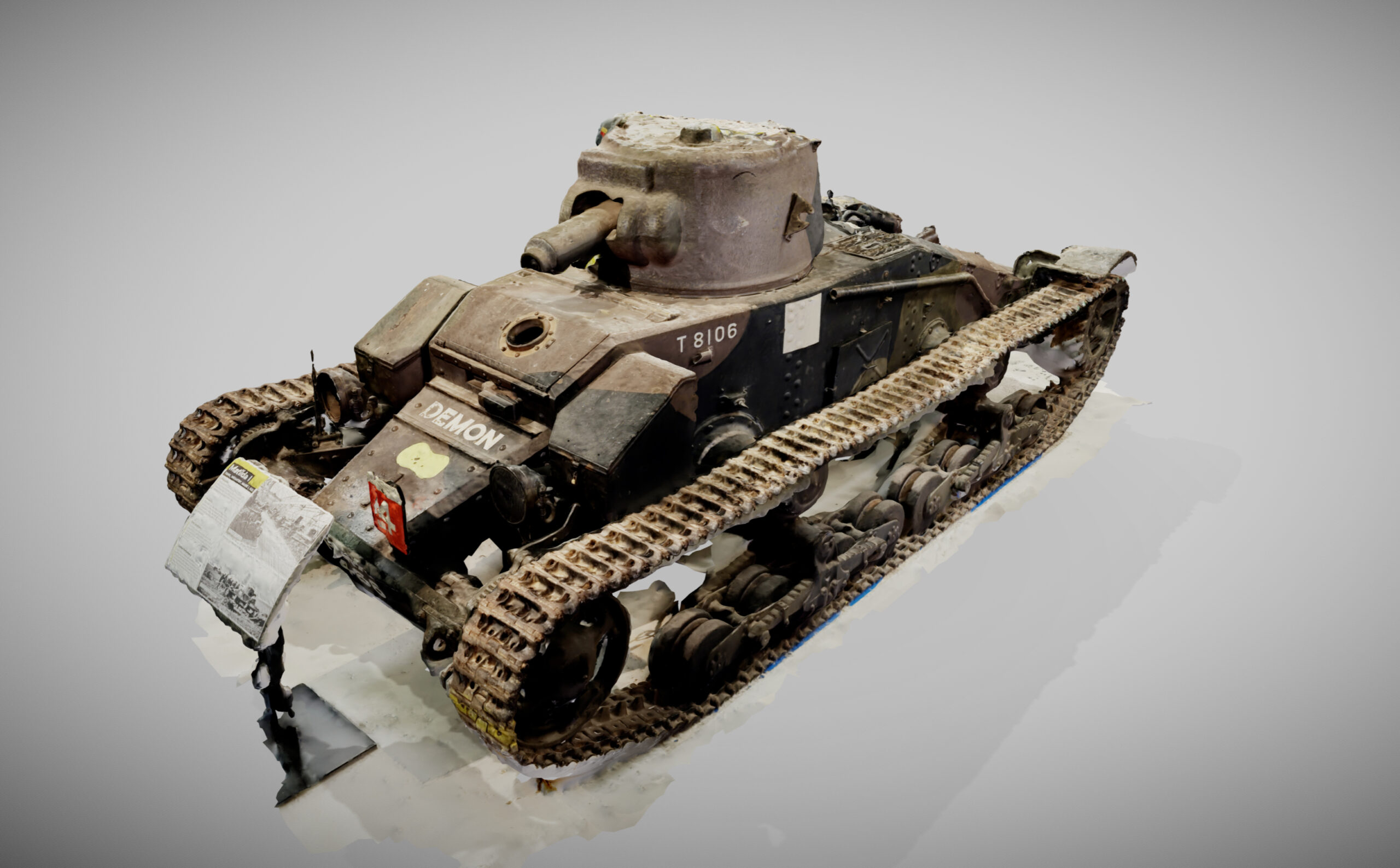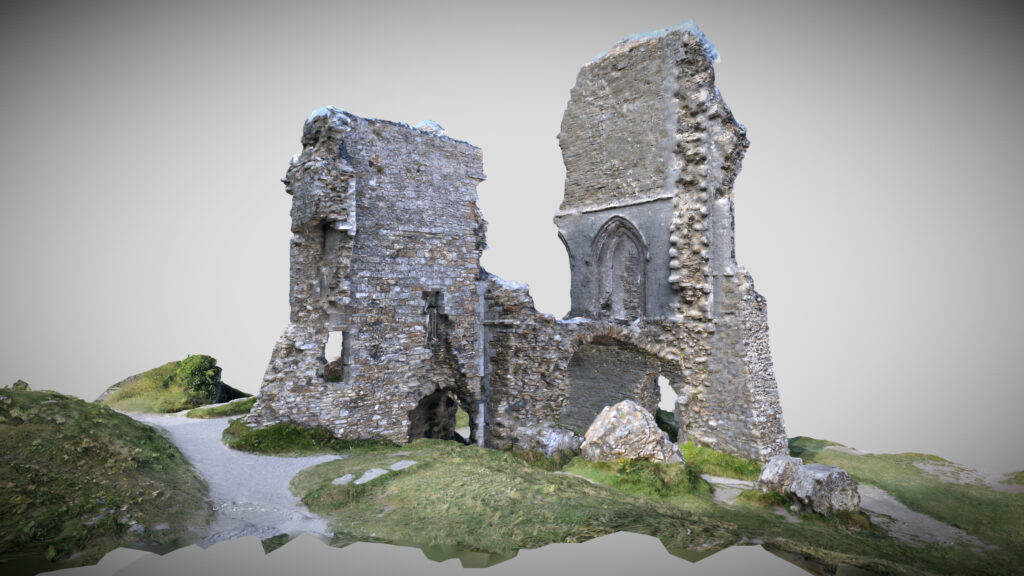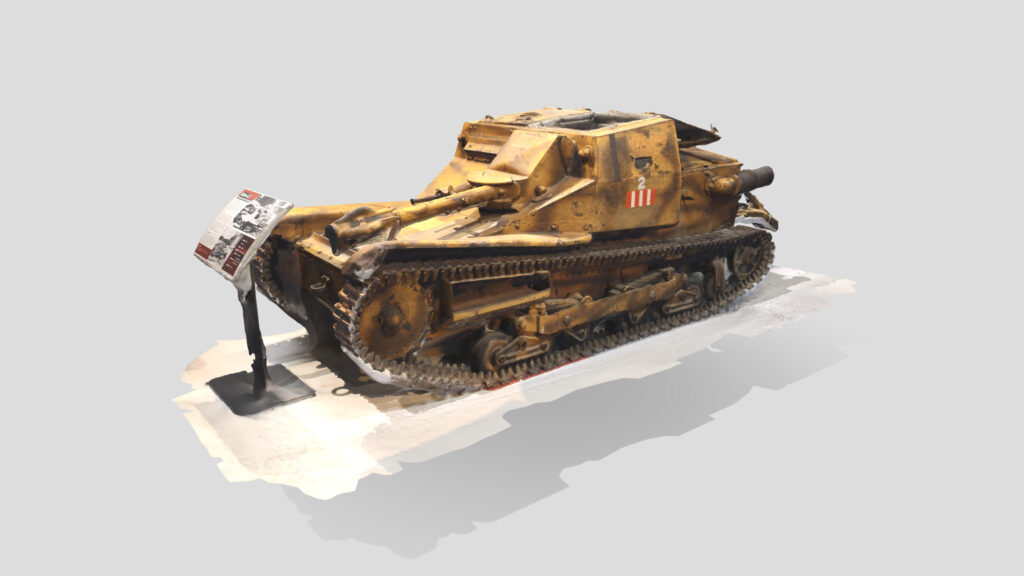3D Summer Souvenir Snapshots

Laurence R. Penn, CFVT, Senior Forensic Animation/Video Specialist
Warm days have turned cool, kids are back at school, and summer vacations seemed like they happened so long ago. As fall begins, it’s nice to reminisce about the good times had in the sunny weather by flipping through the many photographs taken over the past few months.
Scattered among my summer pictures from a recent trip to England are several hundred photographs of castle ruins, military tanks, and the recently discovered fossilized skull of a dinosaur nicknamed “Sea Rex.” Although I brought my 24-megapixel Pentax K-3 DSLR camera armed with a crisp 50 mm prime autofocus lens overseas, I ultimately used my phone, a OnePlus Open, to photograph many parts of the trip. As my family and I went about our packed itinerary, my kids rolled their eyes and scoffed as soon as they spotted me whip out my phone or camera, sidestepping awkwardly as I snapped photo after photo, from as many angles as I could.
Although I’ve been working with photogrammetry for a while now, I am still astounded by the power of today’s photogrammetry software’s ability to create intricate and to-scale digital 3D models of our physical surroundings.
3D models of locations and objects have the ability to transport us to a specific time and place in history, allowing us to relive the amazement and splendor of the time.
Even though my documentation tools and process weren’t ideal (including the time restraints placed on me by pushing the patience of my obliging family), the results demonstrated that an object or structure can be fairly well documented in 3D with only several hundred photographs. For comparison, the photo count of a detailed documentation of a building or complex object could run into several thousands of photographs.
I hope you enjoy exploring some of my 3D summer souvenir snapshots!
Corfe Castle
Nestled in a gap of the Purbeck Hills of Dorset lies the majestic ruins of Corfe Castle, which would have been like a 12th century skyscraper at the height of its occupation. Originally built by William the Conqueror, it was partially demolished in 1645 by the Parliamentarians. The castle ruins would have taken days, if not weeks, to properly document in their entirety, so I chose a central section that could be easily photographed from (almost) all angles by foot.

Explore the 3D model of Corfe Castle here.
The Tank Museum in Bovington
I have a faint but very fond childhood memory of visiting The Tank Museum in Bovington, Dorset, with my grandfather, a WWII veteran. Located on a British military base with a collection of over 300 tanks, the museum educates visitors about the development and use of armored vehicles throughout the world in the last century.
The Matilda I tank is a British infantry tank of WWII. These two-man tanks were only used once, during the Battle of France in 1940.

Click here to view the 3D model of the Matilda I tank.
The Carro Armato L3 is an Italian tank which was in service from 1933 to 1945 and featured a nasty flamethrower, the fuel for which was towed in a separate armored trailer (not photographed due to over-tanked and tired looking children).

Check out a 360 view of the Carro Armato L3 tank here.
“Sea Rex”
Found in the cliffs of Kimmeridge Bay on the Dorset coast (part of the Jurassic Coast, a UNESCO World Heritage Site recognized for its geological history and fossilized remains), the giant skull of a monstrous dinosaur of the sea was excavated by climbers dangling on the cliff edge in 2022. The rest of its body is likely still embedded in the slowly eroding cliffside. Sadly, I am unable to share my documentation of the fearsome fossilized skull of the famous Pliosaur, star of David Attenborough’s Attenborough & The Giant Sea Monster documentary, due to copyright concerns. But I would be happy to show any interested eyes should they happen to stop by the DJS office.
More to Come
While I was exploring the many attractions around the Dorset countryside during my summer vacation, many tourists in the United States were exploring the Mount Vernon Estate in Virginia. If they happened to notice something missing from the carriage house, that’s because the estate’s carriage, a model from the era of President George Washington, is meticulously being preserved and restored. Earlier this summer, DJS Associates was hired to document the carriage prior to restoration. The carriage was scanned and photographed. But the results of the data, including detailed models of various sections of the framework, will have to wait for another article.
Categories: Digital Forensics | Documentation & Preservation | EducationTags: 3D Model | Historical Preservation | Photogrammetry


